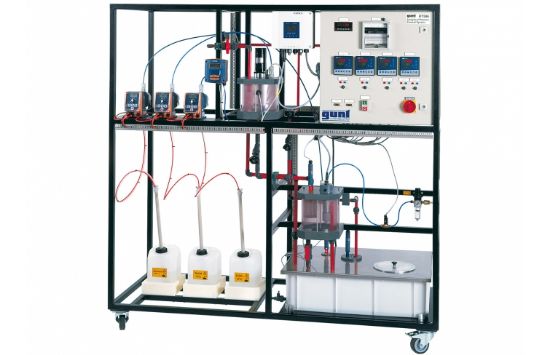The GUNT Control of Water Quality system enables precise monitoring and automatic regulation of key water parameters essential for production processes. Water flows through transparent tanks equipped with sensors to measure conductivity, pH, oxygen concentration, and redox potential, ensuring optimal water quality.
Product Features
- Adequate water quality is essential to many production processes, and this system monitors and controls key parameters.
- Water flows into a transparent tank containing a stirrer for uniform mixing.
- A sensor measures water conductivity; readings are displayed on a meter and sent electrically to the controller.
- The controller adjusts conductivity by adding diluted caustic soda via a metering pump based on preset reference values.
- Caustic soda addition raises pH, after which water flows into a second transparent tank.
- A sensor measures pH value; the controller neutralizes water by adding diluted sulphuric acid via a metering pump.
- Oxygen concentration is measured by another sensor; oxygen levels are controlled by compressed air injection through a control valve.
- Water flows into a collecting tank where redox potential is measured and controlled by dosing iodine solution with a metering pump.
- A sensor in the collecting tank measures pH as a further performance check, with digital display on the switch cabinet.
- A six-channel line recorder records the control processes continuously for detailed monitoring.
Benefits
- Ensures consistent water quality for reliable production performance.
- Automates complex water treatment processes for ease of operation.
- High accuracy through multiple sensor feedback and control loops.
- Reduces manual intervention and potential human error.
- Visual and digital monitoring aids quick diagnosis and troubleshooting.
Why Choose the GUNT Control of Water Quality?
This system is ideal for industries requiring strict water quality standards. By integrating multi-parameter sensors and automated dosing, the GUNT Control of Water Quality offers precise control over conductivity, pH, oxygen, and redox potential—ensuring optimal conditions tailored to your process needs. It combines reliability, accuracy, and user-friendly monitoring for advanced water quality management.

